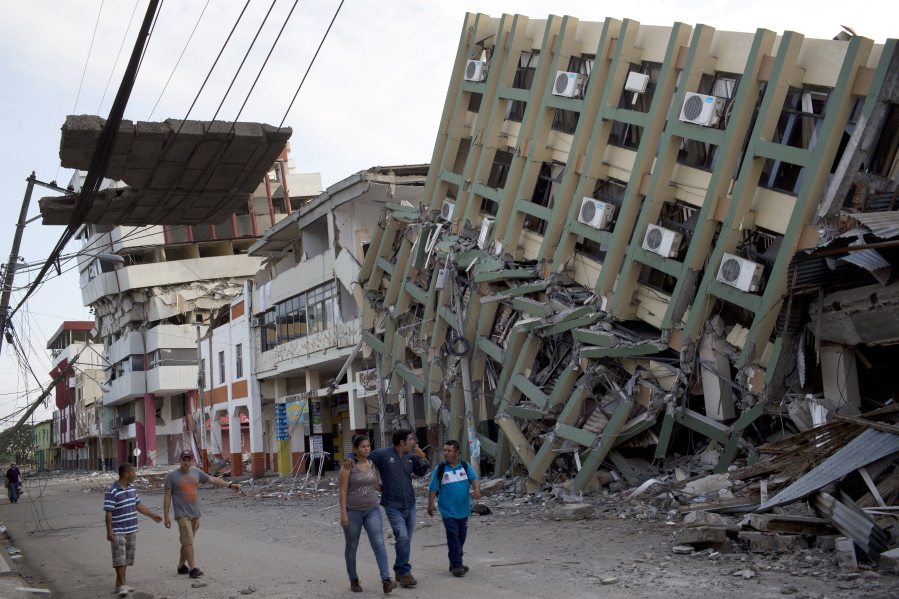MANTA, Ecuador — Rescuers in Ecuador pulled three people out alive Monday after more than 32 hours trapped in the rubble of a shopping center that was flattened by this weekend’s powerful earthquake.
Televised images of the dramatic pre-dawn rescue in this port city gave Ecuadoreans hope that some of the scores of people still unaccounted for may yet be found even as the death toll from Saturday’s 7.8-magnitude quake, the worst to hit Ecuador in decades, climbed. The Los Angeles Times reported Monday evening that 413, including an American and two Canadians, were confirmed dead, with more than 2,500 injured.
To reach the survivors trapped between the floor and roof of the collapsed shopping center in Manta, firefighters cut a nearly 2 1/2 -foot hole through concrete then pulled a woman out head-first. Firefighters applauded as she emerged from the debris, disoriented, caked in dust and complaining of pain but otherwise in good health.
Later, at the same site, 50 rescuers working with sniffer dogs, hydraulic jacks and drill freed another woman and a young man. All three were rushed in ambulances to a nearby hospital. Authorities said another woman remained trapped and was being given water and other supplies as rescuers attempt to remove a concrete slab pinning down her legs.



